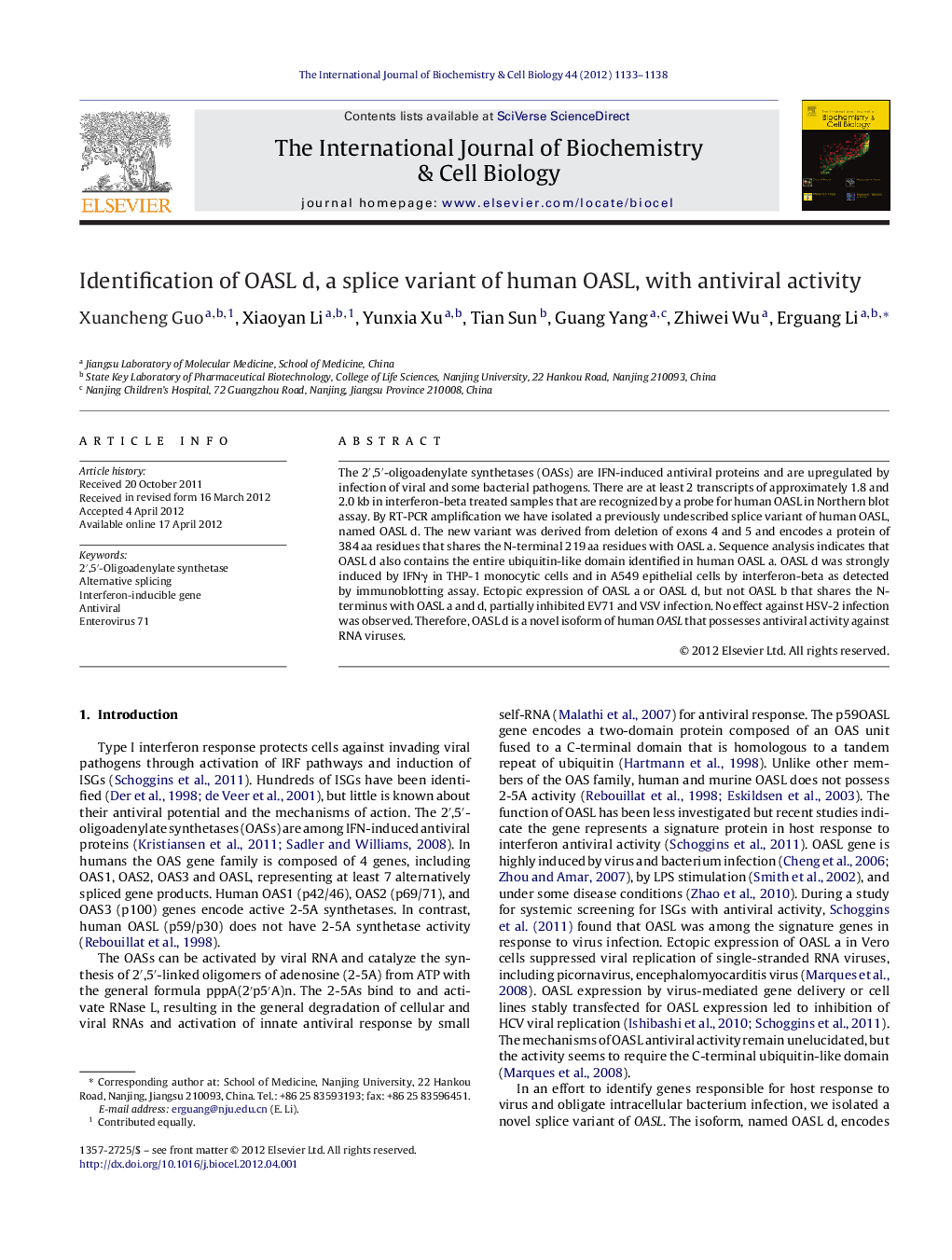| Article ID | Journal | Published Year | Pages | File Type |
|---|---|---|---|---|
| 8324658 | The International Journal of Biochemistry & Cell Biology | 2012 | 6 Pages |
Abstract
The 2â²,5â²-oligoadenylate synthetases (OASs) are IFN-induced antiviral proteins and are upregulated by infection of viral and some bacterial pathogens. There are at least 2 transcripts of approximately 1.8 and 2.0 kb in interferon-beta treated samples that are recognized by a probe for human OASL in Northern blot assay. By RT-PCR amplification we have isolated a previously undescribed splice variant of human OASL, named OASL d. The new variant was derived from deletion of exons 4 and 5 and encodes a protein of 384 aa residues that shares the N-terminal 219 aa residues with OASL a. Sequence analysis indicates that OASL d also contains the entire ubiquitin-like domain identified in human OASL a. OASL d was strongly induced by IFNγ in THP-1 monocytic cells and in A549 epithelial cells by interferon-beta as detected by immunoblotting assay. Ectopic expression of OASL a or OASL d, but not OASL b that shares the N-terminus with OASL a and d, partially inhibited EV71 and VSV infection. No effect against HSV-2 infection was observed. Therefore, OASL d is a novel isoform of human OASL that possesses antiviral activity against RNA viruses.
Keywords
Related Topics
Life Sciences
Biochemistry, Genetics and Molecular Biology
Biochemistry
Authors
Xuancheng Guo, Xiaoyan Li, Yunxia Xu, Tian Sun, Guang Yang, Zhiwei Wu, Erguang Li,
